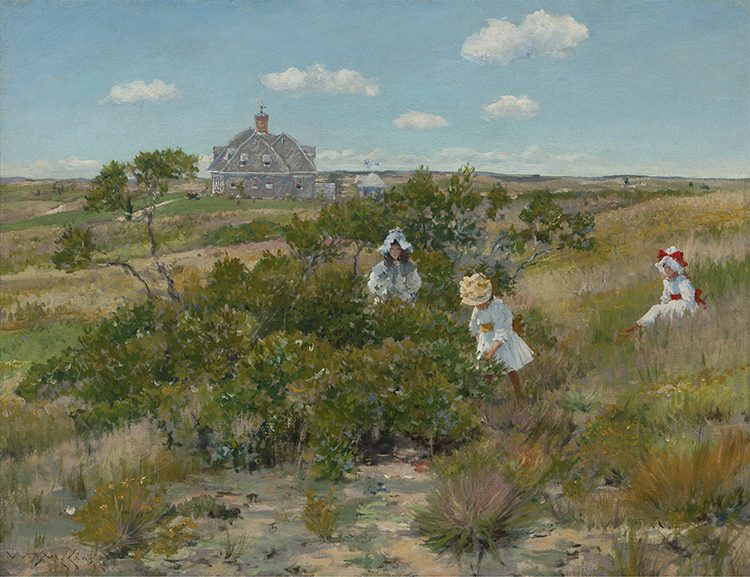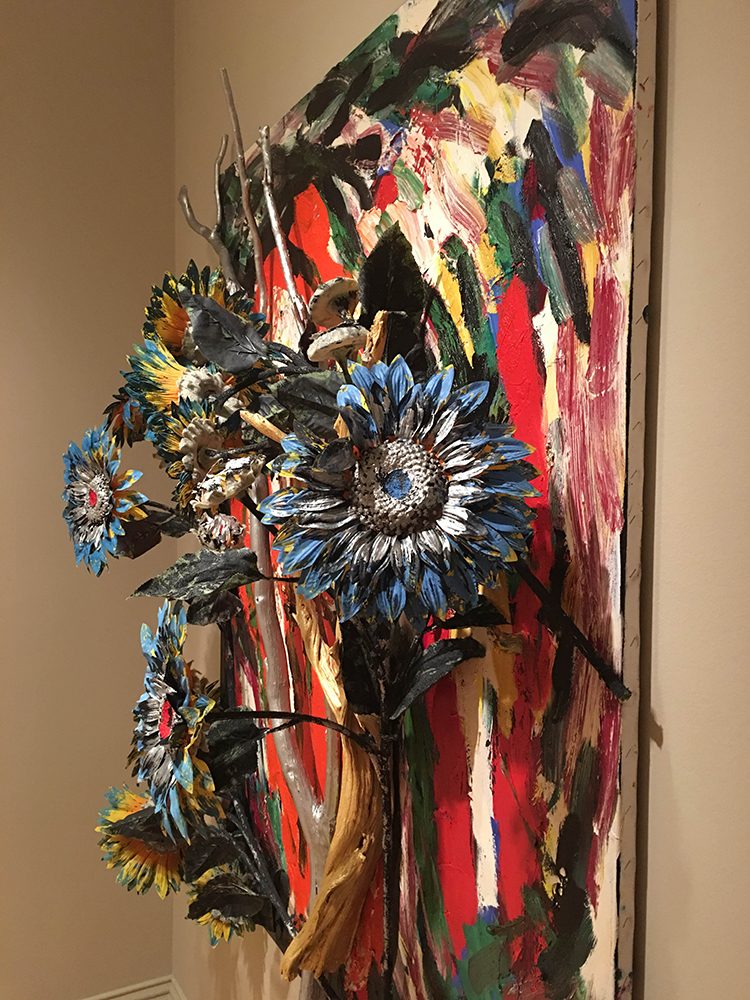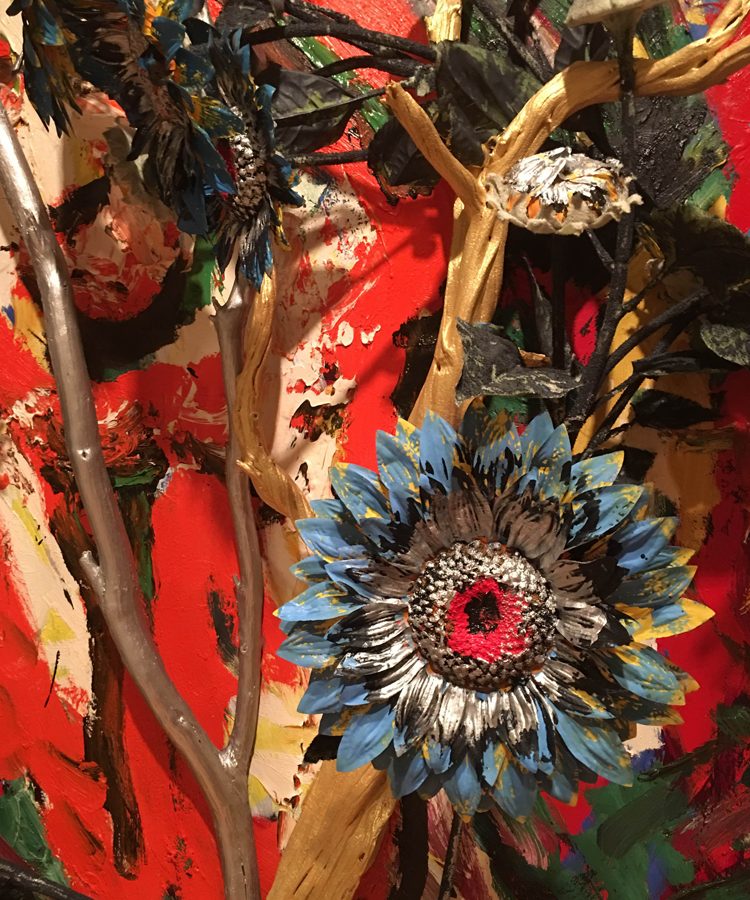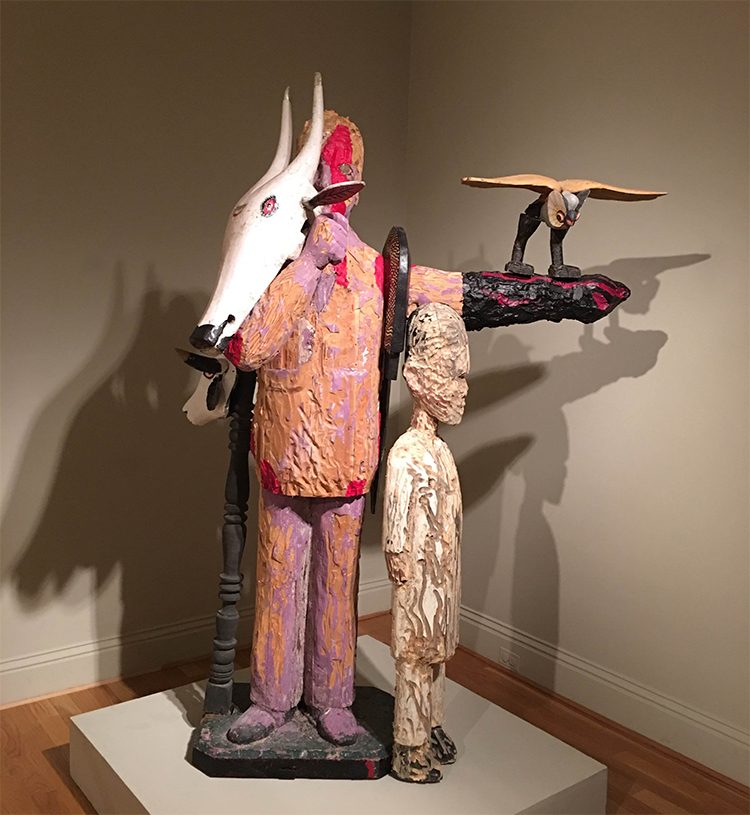
Marjorie Phillips, Night Baseball, 1951. Oil on canvas, 24 1/4 x 36 in. The Phillips Collection, Washington, D.C. Gift of the artist, 1951 or 1952
My favorite work from The Phillips Collection’s permanent collection is Marjorie Phillips’s 1951 oil painting, Night Baseball. There is something nostalgic about the way Phillips represents a night at Griffith Stadium. This visual representation of the moment just before the pitch is thrown evokes all of the other senses. When I look at this painting, I hear the buzz of the crowd and I feel the wind push my skin as the breeze ushers in the smells of the ballpark. Phillips masterfully depicts a night sky that is black but somehow simultaneously glowing from the stadium lights—an effect that is familiar to anyone who has been to a nighttime sports game.
Night Baseball is an enduring snapshot of American life. Perhaps my favorite thing about this piece is its current placement within the museum: on a wall adjacent to the landing of a staircase; the location seems almost incidental. I think its placement adds to its charm—Night Baseball endears itself to the viewer by immersing her in a sensory-rich, familiar American scene.
Lizzie Moore, Marketing & Communications Intern




